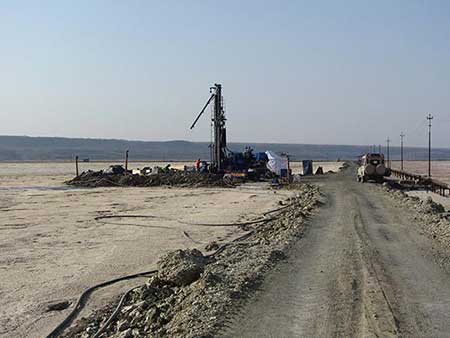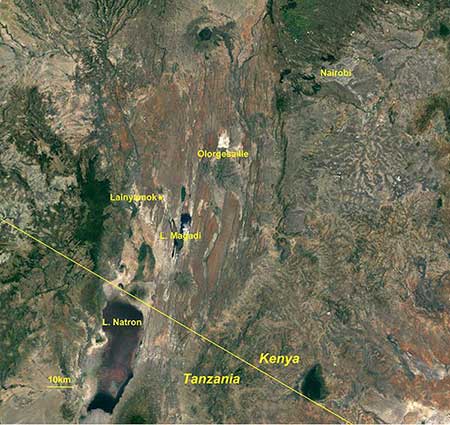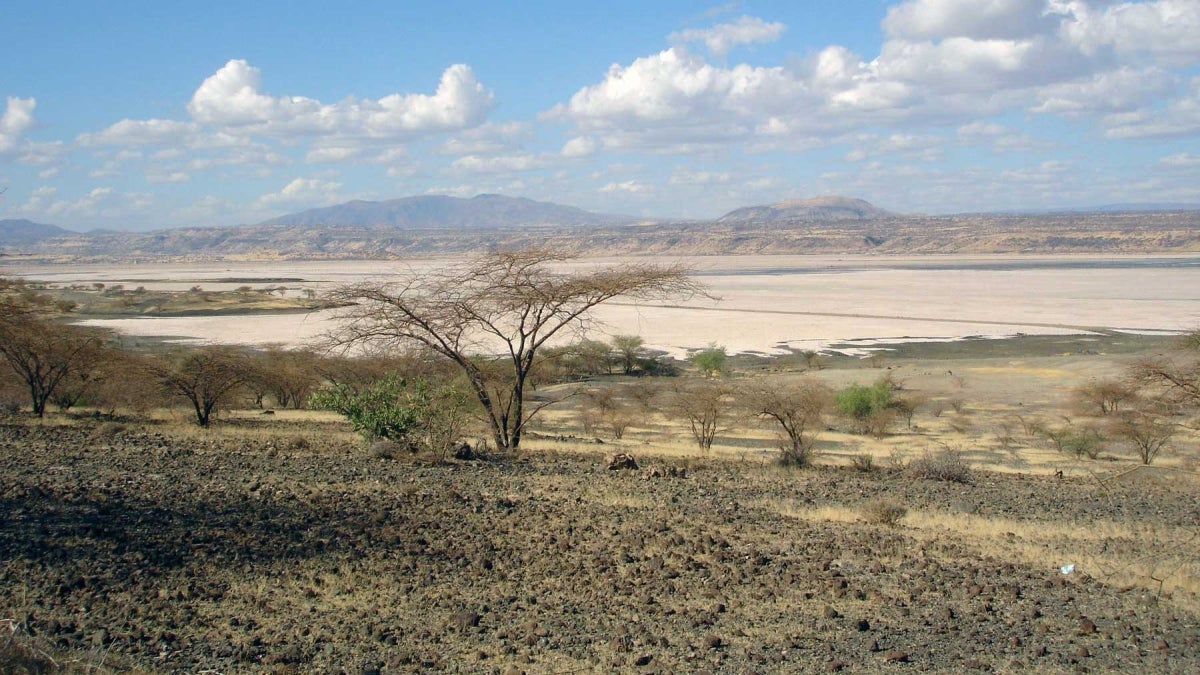Understanding the relationship between Earth history and human evolution is an enduring challenge of broad scientific and public interest. Scientists studying the effects of ancient climate change on human evolution have had to depend on local, but incomplete, terrestrial records and analysis of deep ocean cores collected a considerable distance from where major hominin fossils — the ancient remains of human ancestors — have actually been found.
The Hominin Sites and Paleolakes Drilling Project (HSPDP) comprises a multinational research effort, including researchers from Arizona State University and more than 20 other institutions, which will help scientists better understand the dynamics that link climatic and evolutionary histories. Six drilling sites in Kenya and Ethiopia were chosen to collect deep earth cores to understand climate fluctuations at terrestrial sites close to areas where major collections of human evolution fossil evidence have been found.
This week, analysis of drilled cores from Lake Magadi, Kenya, was published in the Proceedings of the National Academy of Sciences that documents for the first time an increasing drying or aridification of the region since around 575,000 years ago, with evidence that this long-term drying trend was interrupted by many wet-dry cycles.
Arizona State University researcher and co-author Christopher Campisano is the HSPDP scientific project manager and was involved in the drilling at Lake Magadi. Campisano is a research associate with the Institute of Human Origins and associate professor with the School of Human Evolution and Social Change.

Drilling site at Lake Magadi, Kenya. Photo by Chris Campisano
The Lake Magadi site is approximately 30 kilometers from Olorgesailie, an archaeological site with evidence of hominin activity and major transitions in stone tool technologies from more than 1 million to 500,000 years ago and 320,000 to 32,000 years ago. The lake cores captured sediments from nearly 1 million years ago to the present.
Prior to 575,000 years ago, the Lake Magadi region had supported large animals in a wooded grassland and a wet, but cooler climate. The core evidence shows an overarching increase in aridity since 575,000 years ago, with a particularly intense arid period between 525,000 and 400,000.
That increased environmental variability combined with the intense period of drying overlap with a major turnover in large-bodied, specialized grazing mammals becoming locally extinct and replaced by related, but smaller-bodied animals. Though these large-bodied animals may have adapted to a generally drier climate, they may not have been equipped to adapt to the rapid variability from wet to dry conditions.
The core analyses show that the period of greatest climate variability, between wet and dry conditions, took place between about 650,000 to 350,000 years. This correlates with significant changes in stone tools technologies at nearby Olorgesailie, from the large rock hand axes of the Acheulean industry to the smaller, prepared-core and points stone tools of the Middle Stone Age, developed by 320,000 years ago. The later Olorgesailie record also shows evidence of pigment use and sourcing raw materials for stone tools from a greater distance.

This map shows the location of Lake Magadi, Kenya, close by the Tanzania border and the hominin fossil and stone technology sites of Olorgesailie and Lainyamok. Image by Chris Campisano
“One of the questions in connecting paleoclimate with transitions in human evolution is whether the changes were driven by increasing aridity or increased climatic variability. The Magadi core records suggest that at least for the last 600,000 years, it may have been a combination of both.”
When Middle Stone Age tools emerged between 350,000 and 50,000 years, symbolic cultures developed, Homo sapiens appeared, and human fossils from Asia indicate that the earliest modern humans dispersed from Africa between 120,000 and 50,000 years ago. Other climate records indicate that these drier climates, punctuated by wet episodes, may have supported a greener Sahara, opening the possibility of migration across northern routes.
Against this backdrop of a generally drier climate, our early human ancestors were adapting to a variable climate, changing plants and animals in the environment, and creating an ever-sophisticated stone tool technology. Though this research does not emphatically prove that these forced adaptations spurred on the evolution of our species, it does provide more evidence of the environment that our uniquely adaptive ancestors were managing to survive and thrive in.
Records from five other drilling sites continue to be examined, with the larger picture of the connections between a changing climate and hominin adaptations in eastern Africa, the Cradle of Humankind, waiting to be discovered.
This research was published in: Progressive aridification in East Africa over the last half million years and implications for human evolution. Owen et al including Christopher Campisano. Proceedings of the National Academy of Sciences DOI: 10.1073/pnas.1801357115
Top photo: Lake Magadi, Kenya. Photo by Chris Campisano
More Science and technology

ASU professor breeds new tomato variety, the 'Desert Dew'
In an era defined by climate volatility and resource scarcity, researchers are developing crops that can survive — and thrive — under pressure.One such innovation is the newly released tomato variety…

Science meets play: ASU researcher makes developmental science hands-on for families
On a Friday morning at the Edna Vihel Arts Center in Tempe, toddlers dip paint brushes into bright colors, decorating paper fish. Nearby, children chase bubbles and move to music, while…

ASU water polo player defends the goal — and our data
Marie Rudasics is the last line of defense.Six players advance across the pool with a single objective in mind: making sure that yellow hydrogrip ball finds its way into the net. Rudasics, goalkeeper…


